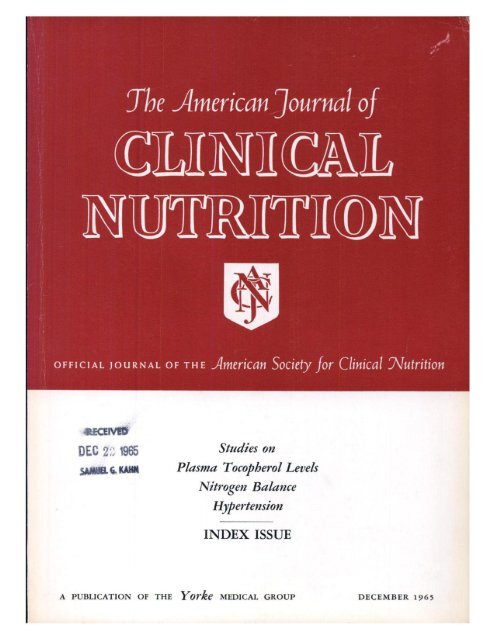Associations of >1-h compared with 1-h meal timing variability (eating jetlag) with plasma glycemic parameters and continuous glucose monitoring measures among pregnant females: a prospective cohort study
IF 6.5
1区 医学
Q1 NUTRITION & DIETETICS
引用次数: 0
Abstract
Background
Eating jetlag (EJL), the difference in eating times between weekdays and weekends, disrupts circadian alignment and may affect metabolic health. However, its influence on glucose tolerance and continuous glucose monitoring (CGM) during pregnancy remains unknown.
Objectives
We aimed to investigate the associations between EJL and glycemic parameters during pregnancy.
Methods
This secondary analysis was conducted on a cohort of 248 healthy pregnant females from Singapore. EJL, derived from 4-d food diaries at 20-wk of gestation, was the absolute difference in average meal times between weekdays and weekends for the first (EJLfirst) and last (EJLlast) meals and categorized as ≤1-h (reference) or >1-h. Primary outcomes at 25-wk of gestation included results from the 75-g oral glucose tolerance test, fasting insulin, homeostasis model assessment of insulin resistance (HOMA2-IR), and β-cell function (HOMA2-%B). Secondary outcomes at 20-wk of gestation included glycemic control and variability measured over 10-d using CGM. Skewed glycemic variables were log-transformed for normality, and associations between EJL and glycemic outcomes were analyzed using multivariable regressions.
Results
After adjusting for baseline sociodemographic, lifestyle, and dietary factors, EJLlast >1-h was associated with higher fasting insulin [geometric mean ratio (95% confidence intervals): 1.21 (1.05, 1.39)], HOMA2-IR [1.21 (1.05, 1.39)], HOMA2-%B [1.11 (1.01, 1.22)], and CGM-based measures, including mean glucose [1.05 (1.00, 1.09)], J-index [1.11 (1.01, 1.22)], and glucose management indicator [1.03 (1.00, 1.06)]. EJLfirst >1-h was associated with higher CGM-based mean amplitude of glycemic excursions (MAGE) [1.09 (1.01, 1.19)]. For CGM-based glycemic variability outcomes (standard deviation, coefficient of variation [CV], MAGE), there were interactions between EJLfirst and 1) diet quality [adherence to Dietary Approaches to Stop Hypertension (DASH)] (P-interactions = 0.06–0.09), and 2) prepregnancy body mass index (BMI) (P-interaction=0.07 for CV). In females with a prepregnancy BMI ≥23 kg/m2 and low diet quality (DASH score ≤median), EJLfirst >1 h was associated with higher CGM-based glycemic variability.
Conclusions
EJL was associated with unfavorable glycemic parameters during pregnancy. Dietary interventions could promote consistent meal timing, especially in higher risk groups with suboptimal nutritional status.
This trial was registered at clinicaltrials.gov as NCT03803345.
孕妇中>1-h与1-h进餐时间变异性(进食时差)与血浆血糖参数和连续血糖监测措施的关系:一项前瞻性队列研究
背景:进食时差(EJL),即工作日和周末之间进食时间的差异,会扰乱昼夜节律,并可能影响代谢健康。然而,其对妊娠期间葡萄糖耐量和连续血糖监测(CGM)的影响尚不清楚。目的:探讨妊娠期间EJL与血糖参数的关系。方法:对来自新加坡的248名健康孕妇进行了二次分析。EJL来自妊娠20周的4天饮食日记,是工作日和周末第一餐(EJLfirst)和最后一餐(EJLlast)平均用餐时间的绝对差异,分为≤1小时(参考)或bbb10 1小时。妊娠25周的主要结果包括75克口服葡萄糖耐量试验、空腹胰岛素、胰岛素抵抗稳态模型评估(HOMA2- ir)和β细胞功能(HOMA2-%B)。妊娠20周的次要结果包括血糖控制和使用CGM在10天内测量的变异性。对偏态血糖变量进行对数转换以获得正态性,并使用多变量回归分析EJL与血糖结局之间的关联。结果:在调整基线社会人口统计学、生活方式和饮食因素后,EJLlast bbb1 h与较高的空腹胰岛素相关[几何平均比值(95%置信区间):1.21(1.05,1.39)]、HOMA2- ir[1.21(1.05, 1.39)]、HOMA2-%B[1.11(1.01, 1.22)],以及基于cgm的测量,包括平均血糖[1.05(1.00,1.09)]、j指数[1.11(1.01,1.22)]和葡萄糖管理指标[1.03(1.00,1.06)]。EJLfirst bbb1 h与较高的基于cgm的平均血糖漂移幅度(MAGE)相关[1.09(1.01,1.19)]。对于基于cgm的血糖变异性结局(标准差、变异系数[CV]、MAGE), EJLfirst与1)饮食质量[坚持高血压饮食方法(DASH)] (p -交互作用= 0.06-0.09)和2)孕前体重指数(BMI) (p -交互作用=0.07,CV)存在交互作用。在孕前BMI≥23 kg/m2且饮食质量较差(DASH评分≤中位数)的女性中,EJLfirst bbb10 1 h与较高的基于cgm的血糖变异性相关。结论:妊娠期EJL与不良血糖指标相关。饮食干预可以促进一致的用餐时间,特别是在营养状况不佳的高风险人群中。该试验在clinicaltrials.gov注册为NCT03803345。
本文章由计算机程序翻译,如有差异,请以英文原文为准。
求助全文
约1分钟内获得全文
求助全文
来源期刊
CiteScore
12.40
自引率
4.20%
发文量
332
审稿时长
38 days
期刊介绍:
American Journal of Clinical Nutrition is recognized as the most highly rated peer-reviewed, primary research journal in nutrition and dietetics.It focuses on publishing the latest research on various topics in nutrition, including but not limited to obesity, vitamins and minerals, nutrition and disease, and energy metabolism.
Purpose:
The purpose of AJCN is to:
Publish original research studies relevant to human and clinical nutrition.
Consider well-controlled clinical studies describing scientific mechanisms, efficacy, and safety of dietary interventions in the context of disease prevention or health benefits.
Encourage public health and epidemiologic studies relevant to human nutrition.
Promote innovative investigations of nutritional questions employing epigenetic, genomic, proteomic, and metabolomic approaches.
Include solicited editorials, book reviews, solicited or unsolicited review articles, invited controversy position papers, and letters to the Editor related to prior AJCN articles.
Peer Review Process:
All submitted material with scientific content undergoes peer review by the Editors or their designees before acceptance for publication.

 求助内容:
求助内容: 应助结果提醒方式:
应助结果提醒方式:


